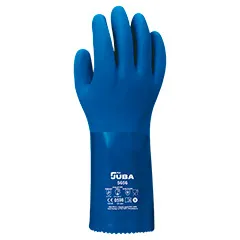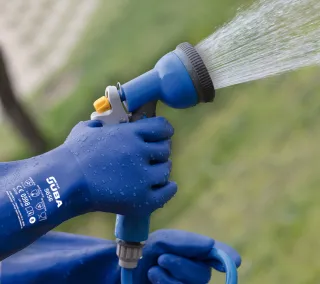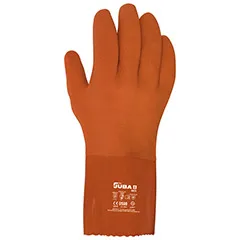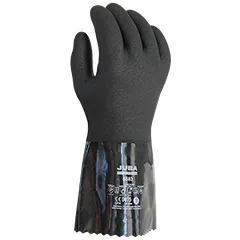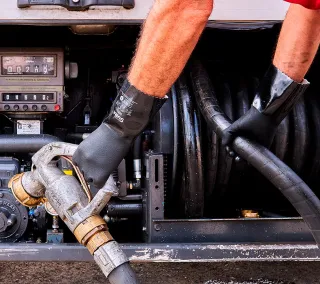

The EN374: 2003 standard is renamed ENISO374: 2016. The purpose of this standard is to classify gloves according to their behavior when exposed to chemical substances.
They are divided into the following parts:
EN ISO 374-1:2016 - Terminology and performance requirements for chemical risks.
EN 374-2:2014 - Determination of resistance to penetration.
EN 16523-1:2015 + A1:2018 - Permeation by liquid chemicals under continuous contact conditions.
EN ISO 374-4:2019 - Determination of resistance to chemical degradation.
EN ISO 374-5:2016 - Terminology and requirements demanded for risks of microorganisms.
Gloves classification according to ENISO374-1: 2016
Gloves are divided into three types:
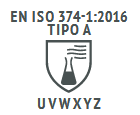 TYPE A
TYPE A
Step time ≥ 30 min for at least 6 products
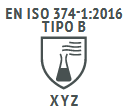 TYPE B
TYPE B
Step time ≥ 30 min for at least 3 products
 TYPE C
TYPE C
Step time ≥ 10 min for at least 1 products
|
LETTER
|
CHEMICAL SUBSTANCE
|
CAS NUMBER
|
CLASS
|
|
A
|
Methanol
|
67-56-1
|
Primary alcohol
|
|
B
|
Acetone
|
67-64-1
|
Cetone
|
|
C
|
Acetonitrile
|
75-05-8
|
Nitrile compound
|
|
D
|
Dichloromethane
|
75-09-2
|
Chlorine hydrocarbon
|
|
E
|
Carbon disulfide
|
75-15-0
|
Sulphate organic compound
|
|
F
|
Toluene
|
108-88-3
|
Aromatic hydrocarbon
|
|
G
|
Diethylamine
|
109-89-7
|
Amine
|
|
H
|
Tetrahydrofuran
|
109-99-9
|
Heterocyclic ether
|
|
I
|
Ethyl acetate
|
141-78-6
|
Ester
|
|
J
|
n-heptane
|
142-85-5
|
Saturated hydrocarbon
|
|
K
|
Sodium Hydroxide 40%
|
1310-73-2
|
Inorganic alkaline
|
|
L
|
Sulphuric acid 96%
|
7664-93-9
|
Inorganic, oxidising mineral acid
|
|
M
|
Nitric acid 65%
|
7697-37-2
|
Inorganic, oxidising mineral acid
|
|
N
|
Acetic acid 99%
|
64-19-7
|
Organic acid
|
|
O
|
Ammonia Hydroxide 25%
|
1332-21-6
|
Organic Alkaline
|
|
P
|
Hydrogen peroxide 30%
|
7722-84-1
|
Peroxide
|
|
S
|
Hydrofluoric acid 40%
|
7664-39-3
|
Mineral organic acid
|
|
T
|
Formaldehyde 37%
|
50-00-0
|
Aldehyde
|
Levels of resistance to permeability
|
TAVERAGE PENETRATION TIME
|
PERFORMANCE LEVELS
|
AVERAGE PENETRATION TIME
|
PERFORMANCE LEVELS
|
|
> 10
|
Class 1
|
> 120
|
Class 4
|
|
> 30
|
Class 2
|
> 240
|
Class 5
|
|
> 60
|
Class 3
|
> 480
|
Class 6
|
Gloves classification according to EN374-2:2014
It is the advance of chemical products through the material, seams of the glove at a non-molecular level. Air leak test: the glove is inflated with air and immersed in water. The appearance of air bubbles is controlled within 30 '. Water leak test: the glove is filled with water and the appearance of water droplets is controlled. If these tests are positive, the pictogram will be put on.
Gloves classification according to EN374-4: 2013
Detriment to some of the glove's properties due to contact with a chemical. Eg: discoloration, hardening, softening, etc.Permeation test EN 16523-1. It is the advancement of chemicals at the molecular level. The resistance of the glove material to permeation by a chemical is determined by measuring the time it passes through the material.
Modification of the ENISO374-5: 2016 standard
When the glove passes the test described for virus protection, the word “virus” will appear under the pictogram. If nothing appeared, protection would only be assured against bacteria.
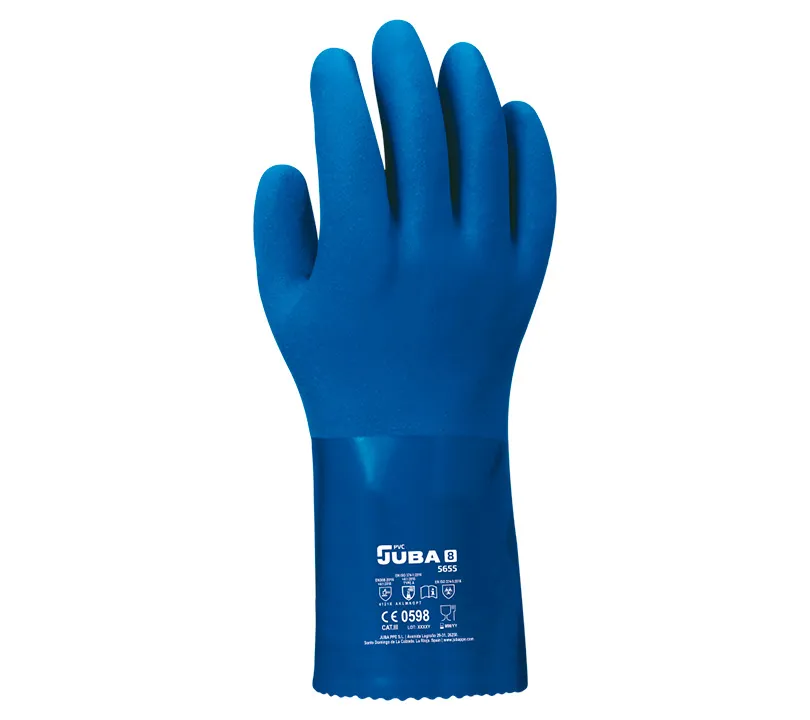
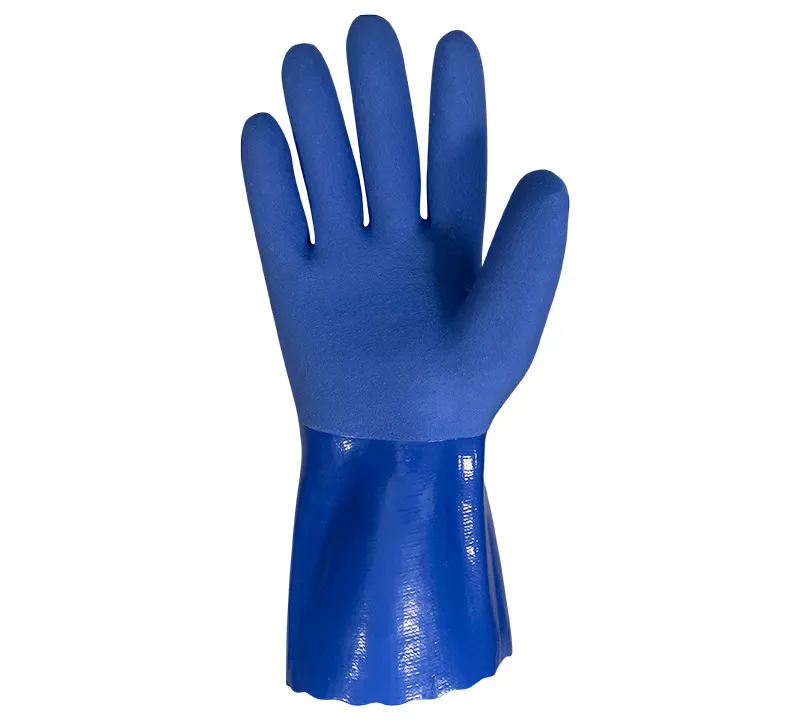
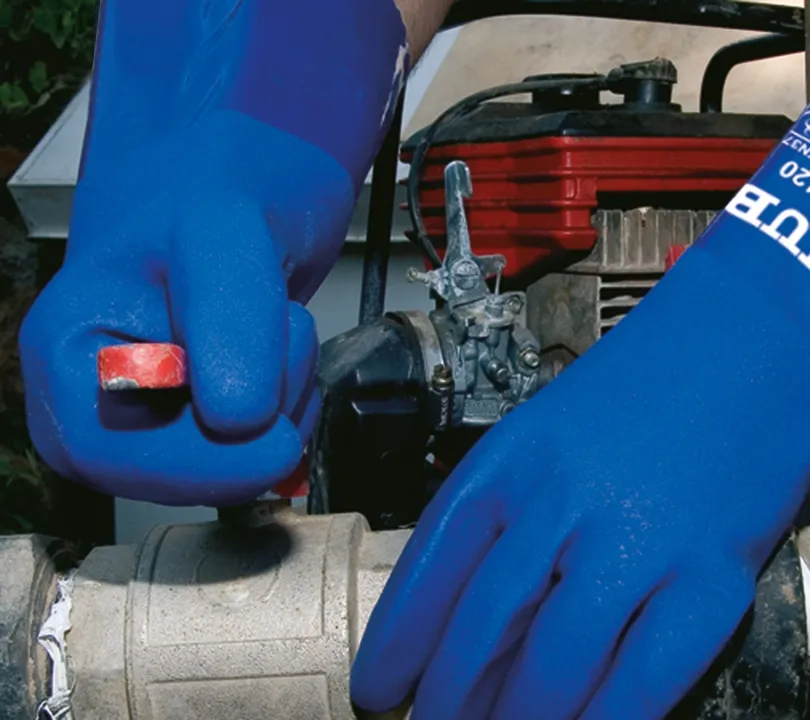






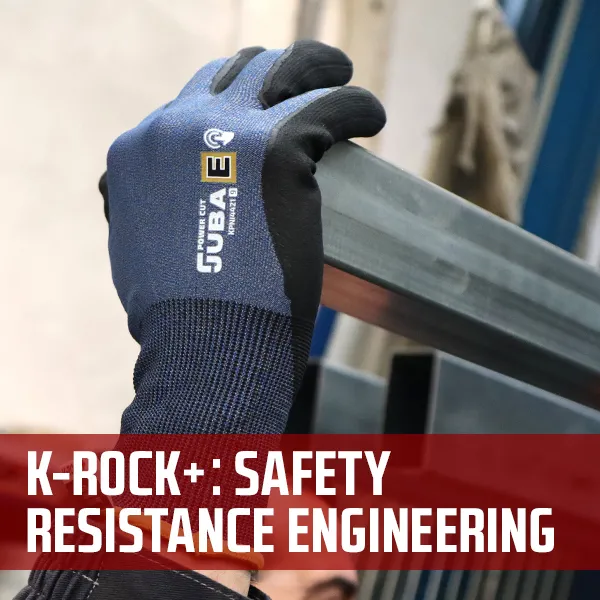
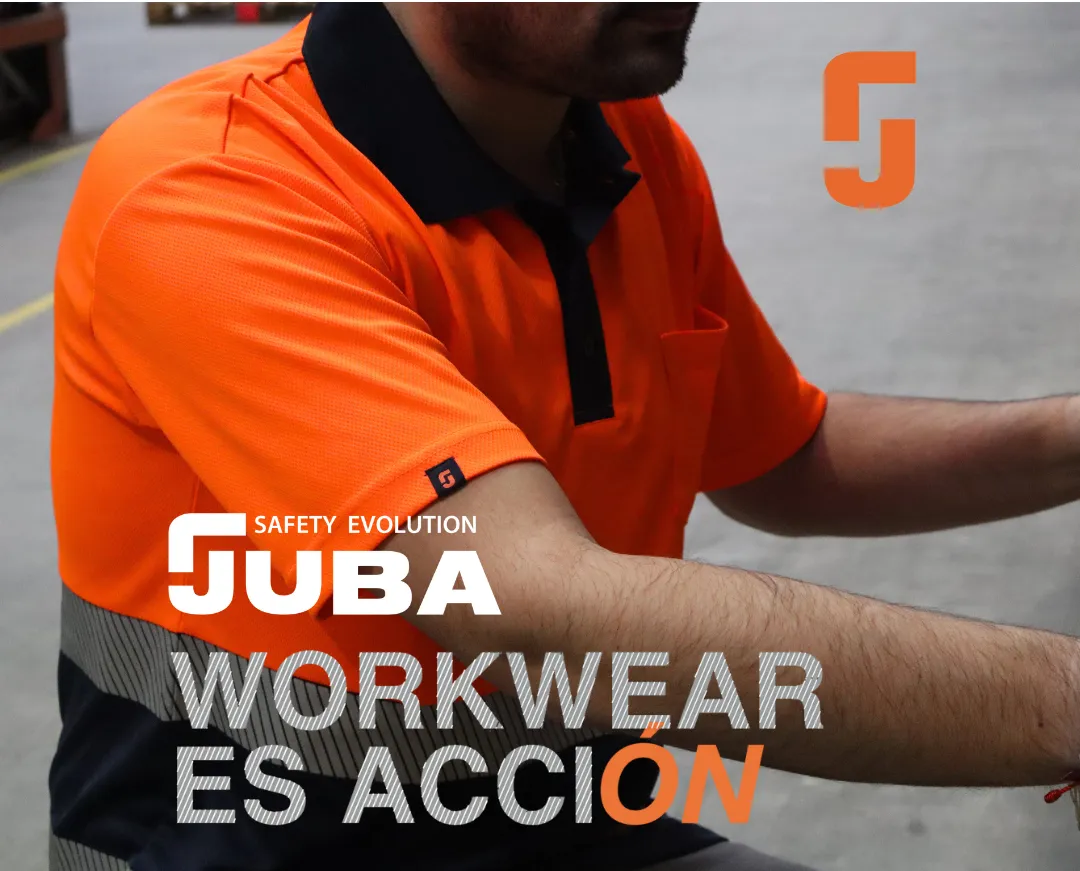






 TYPE A
TYPE A TYPE B
TYPE B TYPE C
TYPE C